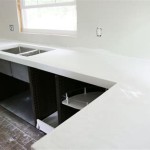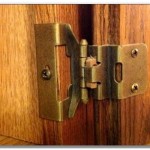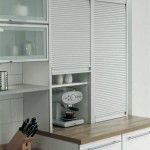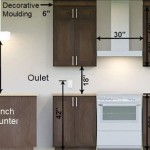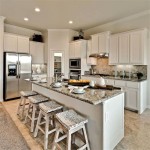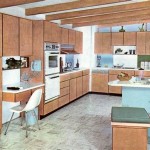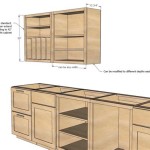Can You Change Kitchen Doors? An In-Depth Exploration
The prospect of renovating a kitchen can be daunting, often conjuring images of extensive demolition, lengthy project timelines, and significant financial investment. However, achieving a refreshed kitchen aesthetic does not always necessitate a full-scale overhaul. Replacing kitchen doors, while retaining the existing cabinet carcasses, presents a viable and often more cost-effective alternative. This article delves into the feasibility, considerations, and complexities surrounding the replacement of kitchen doors, providing a comprehensive understanding of the process.
The primary reason many homeowners consider changing kitchen doors is to update the kitchen's style. Old or outdated doors can make an otherwise functional kitchen feel drab and unappealing. New doors can instantly transform the space to reflect current trends, personal preferences, or a completely different design aesthetic. Furthermore, worn or damaged doors – those with chipped paint, peeling veneer, or broken hinges – can detract from the overall kitchen appearance. Replacing these doors can improve the aesthetic appeal and functionality of the kitchen without the expense and disruption of replacing the entire cabinetry.
The act of replacing kitchen doors, in its essence, is about retaining the structural integrity of the existing cabinet framework while altering its facade. This approach minimizes waste, reduces installation time, and potentially saves a considerable amount of money compared to a complete kitchen renovation. It is a popular choice for those seeking a quick and efficient method to revitalize their kitchen space.
Assessing the Condition of Existing Cabinets
The determining factor in deciding whether to replace kitchen doors lies in the condition of the existing cabinet carcasses. A thorough assessment is crucial before embarking on the project. Key areas to examine include the structural soundness of the cabinets, the stability of the hinges, and the overall levelness and alignment of the units. If the cabinet boxes are warped, water-damaged, or show significant signs of decay, replacing only the doors may prove to be a short-sighted solution. In such cases, addressing the underlying structural issues becomes paramount for a lasting and satisfactory result.
Specifically, attention should be paid to the areas around the hinges and mounting points. Repeated use and wear and tear can weaken these areas, leading to loose or damaged screw holes. If the damage is minor, it is often possible to reinforce the area with wood filler or dowels before reattaching the hinges. However, extensive damage may indicate a more significant problem with the cabinet's structural integrity.
Furthermore, the alignment of the cabinets is critical. If the cabinets are not level or are significantly out of alignment, the new doors may not fit properly, resulting in gaps, uneven closures, and an overall unprofessional appearance. Addressing any alignment issues before installing the new doors will ensure a more seamless and aesthetically pleasing outcome. Shimming and leveling the cabinets may be necessary to achieve proper alignment.
Navigating Door Styles, Materials, and Finishes
Once the suitability of the existing cabinets is confirmed, the next step involves selecting new kitchen doors. This is where aesthetic preferences come into play, and a wide array of options are available. The choice of door style, material, and finish can drastically alter the overall look and feel of the kitchen. Understanding the different options is essential for making an informed decision that aligns with the desired aesthetic and budget.
Door styles range from traditional raised-panel designs to sleek and modern flat-panel options. Raised-panel doors typically feature a decorative center panel that is raised above the surrounding frame, lending a classic and elegant look. Flat-panel doors, on the other hand, offer a minimalist and contemporary aesthetic with their clean lines and unadorned surfaces. Other popular styles include shaker doors, known for their simple and versatile design, and slab doors, which are completely flat and offer a minimalist look.
Materials used for kitchen doors vary widely, each offering distinct advantages and disadvantages. Solid wood doors are prized for their durability, natural beauty, and ability to be refinished. However, they are typically more expensive than other options and can be susceptible to warping and cracking in humid environments. Wood veneer doors offer a similar aesthetic to solid wood at a lower cost, consisting of a thin layer of real wood adhered to a core material such as MDF (Medium-Density Fiberboard). MDF doors are a popular choice for their affordability, stability, and smooth surface that is ideal for painting. Laminate doors are highly durable and resistant to scratches, stains, and moisture, making them a practical option for busy kitchens. Thermofoil doors are made by wrapping MDF with a layer of vinyl, offering a seamless and easy-to-clean surface.
The finish of the kitchen doors plays a crucial role in the overall aesthetic appeal. Painted doors offer a wide range of color options and can be easily customized to match any décor. Stained doors showcase the natural grain of the wood, adding warmth and character to the kitchen. Glazed finishes add depth and dimension to the doors, highlighting the details of the design. High-gloss finishes create a sleek and modern look, while matte finishes offer a more subdued and understated appearance.
The Importance of Accurate Measurements and Compatibility
Accurate measurements are paramount to the success of a kitchen door replacement project. Precise measurements ensure that the new doors fit properly within the existing cabinet frames, preventing gaps, misalignment, and functional issues. Taking careful measurements of the existing doors or cabinet openings is a critical step that should not be overlooked.
The height, width, and thickness of the existing doors should be measured accurately, using a measuring tape and ensuring that the measurements are taken in millimeters or inches, depending on the supplier's requirements. It is also essential to measure the distance between the hinge holes, as this will ensure that the new doors are compatible with the existing hinges or allow for the correct placement of new hinges. Consider labeling each door and its corresponding measurements to avoid confusion during the ordering process.
Compatibility extends beyond just the physical dimensions of the doors. The type of hinges used is also a crucial factor. Different types of hinges require different mounting techniques and hole patterns. If the existing hinges are concealed hinges, it is important to ensure that the new doors are compatible with this type of hinge and that the hinge holes are pre-drilled in the correct locations. If the existing hinges are surface-mounted hinges, it may be possible to use the same hinges on the new doors, provided that the screw holes align properly. However, it is often recommended to replace the hinges with new ones to ensure optimal performance and longevity.
When ordering new kitchen doors, it is advisable to provide the supplier with as much information as possible, including the measurements, the type of hinges, and any other relevant details. Some suppliers may offer a measurement service to ensure accuracy, while others may provide templates or guides to assist with the measurement process. Taking the time to gather accurate measurements and provide detailed information will minimize the risk of errors and ensure that the new doors fit perfectly and function properly.

Reface Or Replace Your Kitchen Units Dream Doors

Reface Or Replace Your Kitchen Units Dream Doors

Reface Or Replace Your Kitchen Units Dream Doors

Can You Replace Just The Cabinet Doors Now

How Can I Change The Look Of My Kitchen Cabinet Doors Now

Can I Just Replace The Doors On My Cabinets Redo

Replacing Kitchen Cabinet Doors Before And After Crafty Little Gnome

Can You Replace Kitchen Cabinet Doors Only Know This First

Are You Looking To Refit Your Entire Kitchen Or Just Replace Replacement Doors Cabinet Cupboard

Change Your Kitchen Cabinet Doors And Restyle

